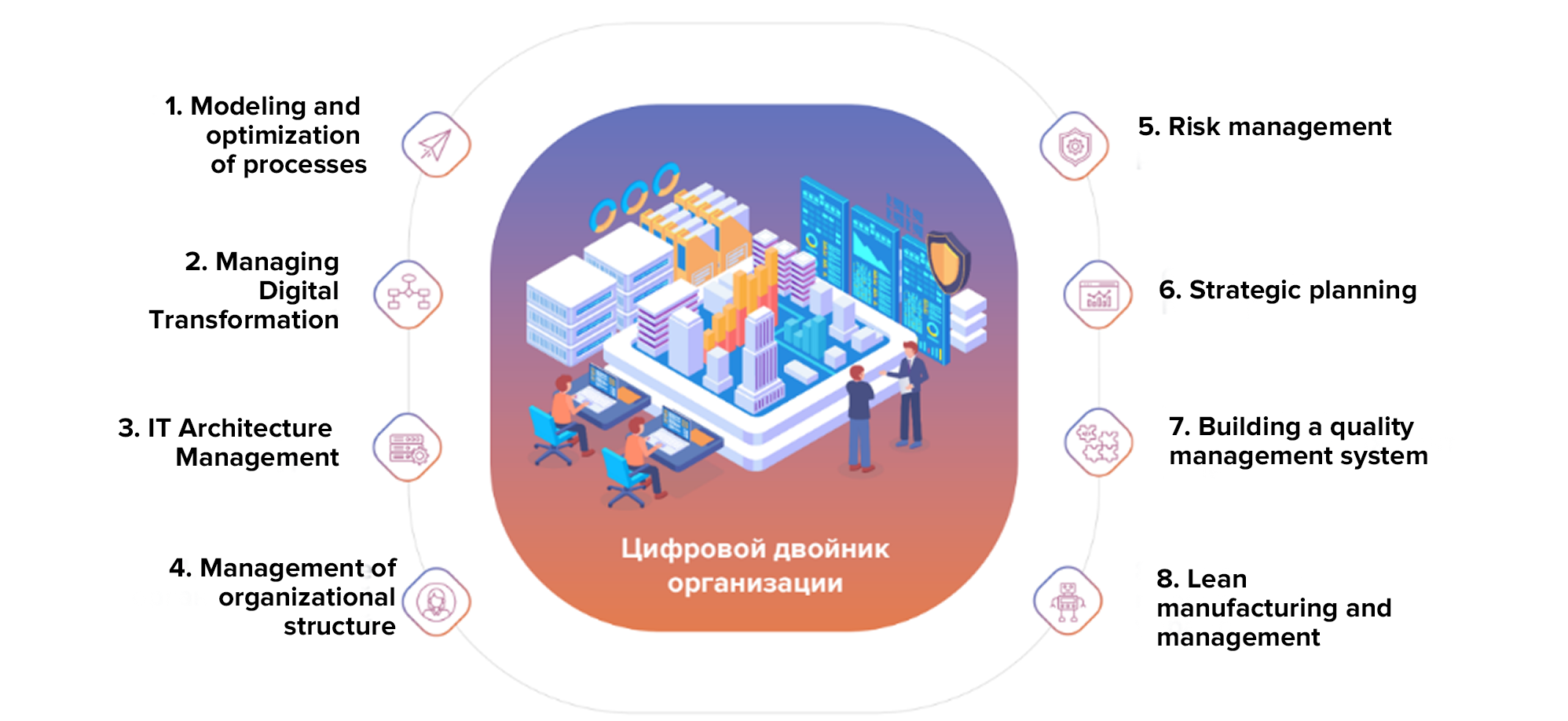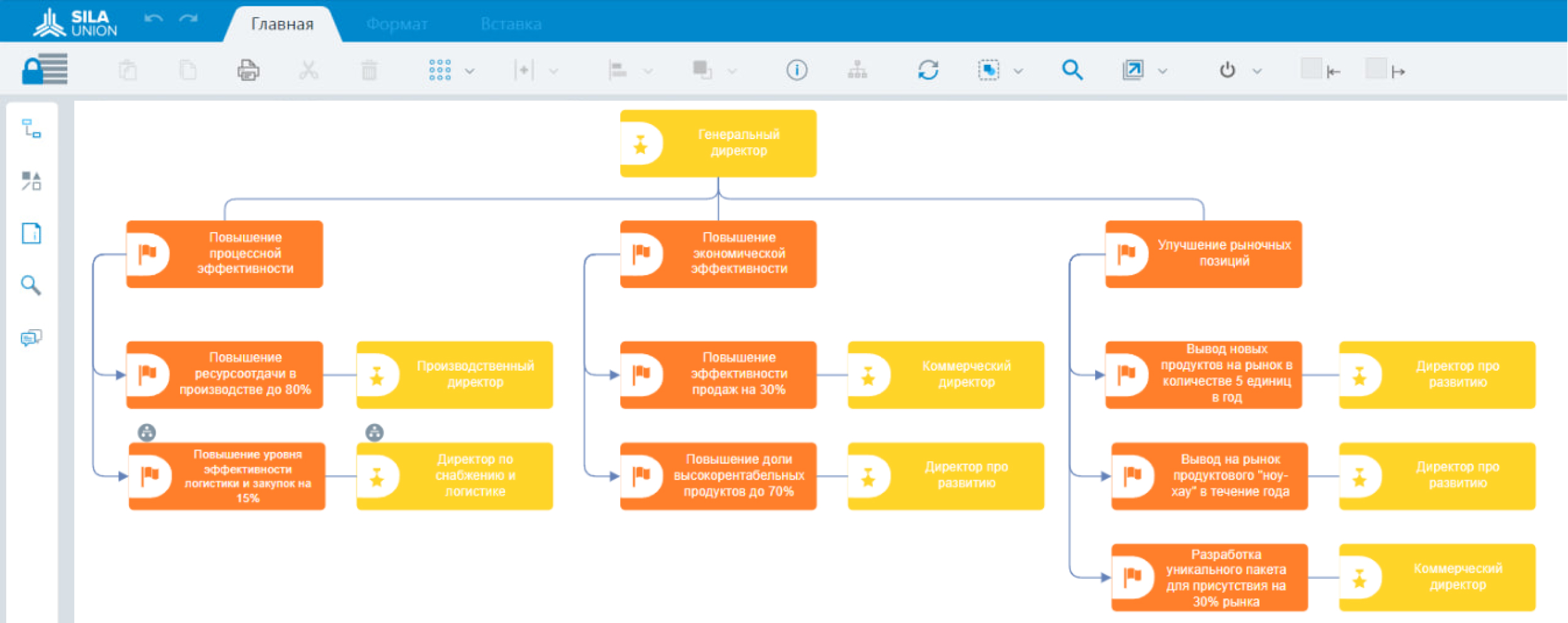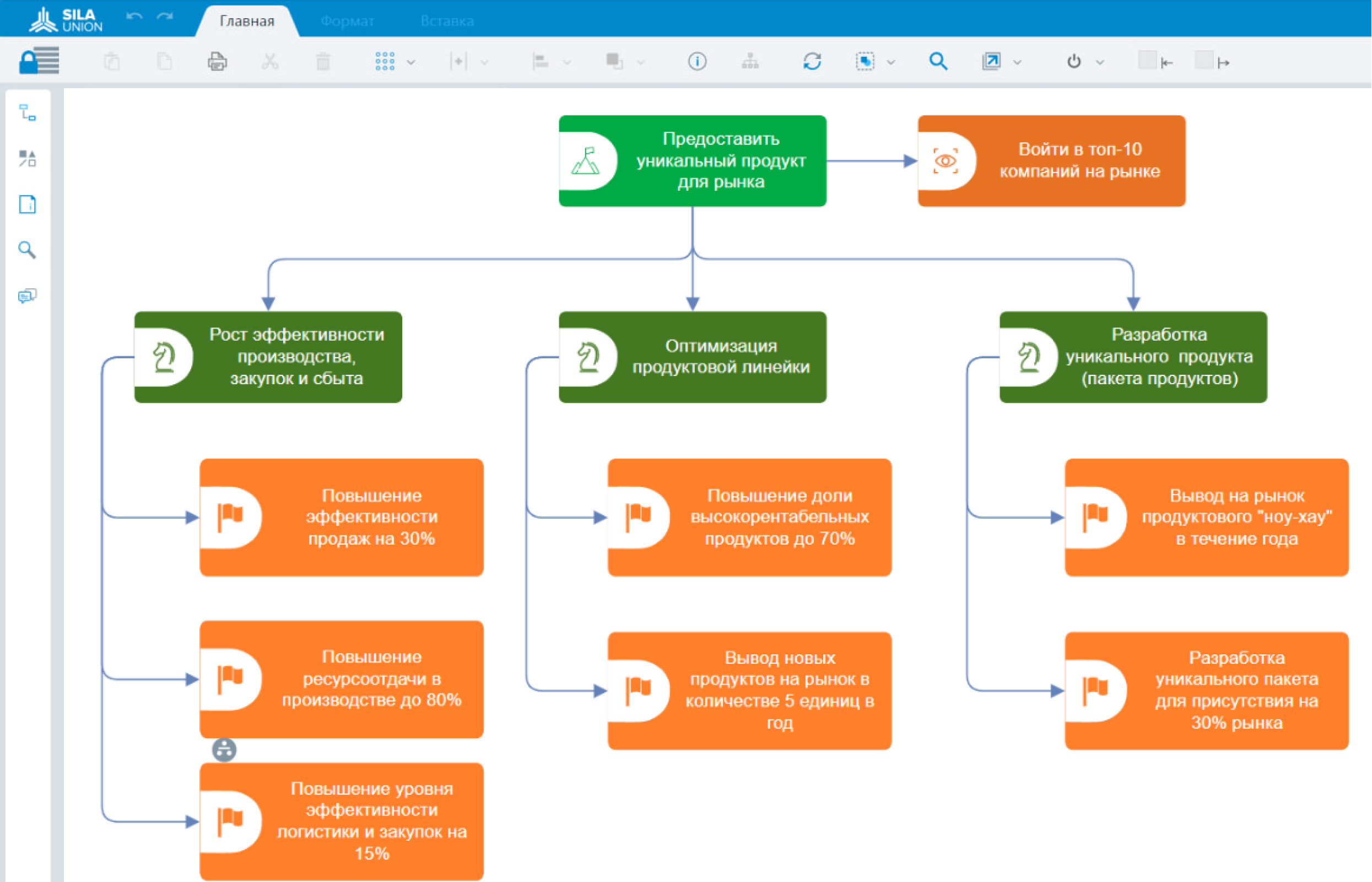
Strategic Planning in SILA Union Software: A Comprehensive Approach to Digitalizing Corporate Strategy
In today’s highly competitive and rapidly evolving business environment, strategic planning is no longer optional—it is a critical management component for any organization striving for long-term success. Traditional approaches to strategic planning often suffer from fragmented data, lack of transparency, and difficulty in tracking the execution of strategic initiatives. SILA Union software offers an innovative solution to these challenges by providing a comprehensive approach to digitalizing strategic planning and integrating it with all aspects of the organization’s operations.
This article explores how the strategic planning module is implemented in SILA Union, its key components, a typical strategic planning process, and integration capabilities with other information systems in the context of strategy.

The Nature of Strategic Planning in the Digital Age
Strategic planning is a systematic process of defining long-term organizational goals and developing plans to achieve them. It includes analyzing the external and internal environment, formulating mission and vision statements, setting strategic objectives, developing and executing strategies, and monitoring and adjusting strategic initiatives. In the digital age, strategic planning has taken on new dimensions. First, data has become a critical foundation for strategic decision-making. Second, the pace of change in the external environment has accelerated, requiring greater flexibility and adaptability in strategy. Third, the connection between strategy and day-to-day operations has become stronger, necessitating a unified information space for managing the organization. SILA Union addresses these modern challenges by offering tools that support the full digitalization of the strategic planning cycle—from defining mission and vision to monitoring the implementation of strategic initiatives at the operational level.

Strategic planning is a systematic process of defining long-term organizational goals and developing plans to achieve them. It includes analyzing the external and internal environment, formulating mission and vision statements, setting strategic objectives, developing and executing strategies, and monitoring and adjusting strategic initiatives. In the digital age, strategic planning has taken on new dimensions. First, data has become a critical foundation for strategic decision-making. Second, the pace of change in the external environment has accelerated, requiring greater flexibility and adaptability in strategy. Third, the connection between strategy and day-to-day operations has become stronger, necessitating a unified information space for managing the organization. SILA Union addresses these modern challenges by offering tools that support the full digitalization of the strategic planning cycle—from defining mission and vision to monitoring the implementation of strategic initiatives at the operational level.
Architecture of the Strategic Planning Module in SILA Union
Strategic planning in SILA Union is built on a modular architecture integrated with a unified data repository. The core components of this architecture include:
Strategic Analysis Module – provides tools for analyzing the external and internal environment, including SWOT analysis, Porter’s Five Forces, and other methods. These analyses can be executed using attributes set on process models in various notations (e.g., EPC). Leveraging the unified data repository, this module can access information from other SILA Union modules, such as business processes, organizational structure, and IT architecture.
Strategic Goal Setting Module – allows users to define and visualize the organization’s mission, vision, and strategic objectives, and map their interconnections. It supports various notations, including Norton and Kaplan’s strategy maps, and integrates with the balanced scorecard module.
Strategic Initiatives Module – offers tools to develop, prioritize, and plan strategic initiatives aimed at achieving strategic goals. This module can integrate with project and resource management modules.
Balanced Scorecard (BSC) Module – enables development and tracking of key performance indicators (KPIs) to assess progress toward strategic objectives. It integrates with analytics and reporting modules.
Strategic Controlling Module – provides tools for monitoring and controlling strategy implementation, including variance analysis and corrective actions. It integrates with risk management and change management modules.
All these modules are connected to SILA Union’s unified data repository, ensuring consistency, integrity, and availability of strategic information to relevant stakeholders based on their access levels.
Functional Capabilities of Strategic Planning in SILA Union
SILA Union offers a wide range of features to support strategic planning processes, adaptable to each customer’s specific needs. In terms of strategy modeling, the platform provides flexible tools for creating and visualizing strategy maps that illustrate cause-and-effect relationships across different perspectives (finance, customers, internal processes, learning and growth). It supports scenario modeling, goal decomposition down to operational tasks, and mapping strategic initiatives to organizational goals and resources. One of SILA Union’s key advantages is its ability to integrate strategic planning with other aspects of enterprise architecture. The platform enables connections between strategic goals and business processes, shows how initiatives impact organizational structure, aligns strategy with IT architecture, and links strategic objectives to key products and services. This integration provides a holistic view of strategy execution across the company. In performance management, SILA Union allows users to build KPI hierarchies, set targets, track performance via dashboards and reports, and analyze KPI relationships to identify key performance drivers. With integration to external data sources, the platform supports automatic data collection and updates.
SILA Union also supports a collaborative approach to strategic planning by enabling joint work on strategy models and documents, version control of strategic artifacts, communication within models, and idea collection from employees. This inclusive approach improves the quality of strategic decision-making. The platform automates the creation and updating of strategic documentation, including strategic plans and reports generated from repository data, automatic updates upon model changes, visual materials for strategy communication, and analytical reports on initiative implementation—significantly reducing documentation effort and ensuring accuracy. These functions are powered by scripts that collect and process data from process models and other sources, tailored to the specific needs of each customer project.
Practical Implementation of Strategic Planning in SILA Union
Let’s look at a practical example of a typical strategic planning process using SILA Union:
Stage 1: Strategic Analysis – Create models representing the analysis of the organization’s internal and external environments, such as:
A SWOT analysis model outlining strengths, weaknesses, opportunities, and threats
A competitor analysis model positioning the organization among key competitors
A model of internal resources and competencies
These models can be generated by collecting attributes set on process models, with scripts displaying the data. For instance, SWOT elements (“Strength,” “Weakness,” etc.) can be extracted from entities in EPC/VAD process models.
Stage 2: Strategy Formulation – Create models reflecting strategic direction, such as:
A mission and vision model
A strategy map showing cause-effect relationships among strategic goals
A model of strategic initiatives
A resource allocation model covering financial, human, and other resources
These models are interconnected via decompositions and links, forming a complete strategy view.
Stage 3: Strategy Cascading – Break down the strategy into business unit, department, and employee-level goals via:
Functional strategies (e.g., marketing, finance, HR)
Goal and KPI models for business units and departments
Individual goal and KPI models for key employees
These are all linked back to the corporate strategy to ensure alignment.
Stage 4: Strategy Execution and Monitoring – Use models and tools for monitoring progress, such as:
Strategic KPI dashboards
Initiative status models
Deviation and corrective action models
Strategic risk models and mitigation plans
These ensure real-time control and allow timely strategy adjustments.

Integration Capabilities of SILA Union in Strategic Planning
SILA Union, as a modeling and analysis platform, offers extensive integration capabilities with other systems—critical for strategic planning.
Custom System Integration – SILA Union provides an open API for integration with in-house systems, which is especially valuable for large enterprises with custom project management, budgeting, or HR solutions. Data from these systems can be automatically transferred into SILA Union for updating strategic models and KPIs.
Integration with Systems Offering Open APIs – Direct integration with third-party systems (e.g., BI tools, CRMs, ERPs, project and HR systems) allows organizations to feed real-time data into strategic models, even when those systems don’t have open APIs. This enhances the platform’s analytical power in strategic planning.
Benefits of Implementing Strategic Planning in SILA Union
Implementing strategic planning in SILA Union offers several key advantages:
Unified Information Space – All strategic models and data are stored in one repository, ensuring consistency, integrity, and secure access.
Integration with Business Operations – Strategy models are linked to business processes, organizational structure, IT architecture, and other operational elements for a complete picture of execution.
Flexibility and Adaptability – Organizations can define custom model types, objects, links, and attributes to match their specific methodology, with the ability to evolve over time.
Collaborative Planning – Supports teamwork on models and documents, encouraging participation and improving decision quality.
Automation of Routine Tasks – Automates documentation, data collection, and reporting, freeing up time for strategic analysis.
Transparency and Control – Visual models and dashboards provide clarity and allow for real-time tracking.
Import Substitution and Compliance – As a certified Russian software solution, SILA Union meets regulatory requirements for information security and independence from foreign vendors.
Рисунок 4. Пример отображения стратегических показателей на дашбордах
Conclusion
Strategic planning in SILA Union represents a comprehensive approach to digitalizing corporate strategy, enabling integration with all aspects of organizational activity. It addresses traditional planning issues such as fragmented data, lack of transparency, and difficulty in tracking initiative progress. As a modeling, analysis, and documentation environment, SILA Union offers an ideal platform for strategic planning. Its structured, multi-dimensional approach—spanning business processes, IT architecture, organizational structure, and document hierarchies—forms a strong foundation for integrated strategic management. With a unified data space, flexible modeling tools, collaboration support, and process automation, SILA Union delivers full-cycle support for strategic planning—from environmental analysis to initiative control. Organizations using SILA Union benefit from higher-quality decisions, aligned strategic efforts, and more effective execution, ultimately driving long-term success in a fast-changing business landscape.





